Cathedrals of the countryside. That’s what architectural historian Dirk Baalman calls the abandoned grain silos of the Netherlands. Grey, large, and looming, often found on the edge of a river and stripped of their original purpose decades ago, the silos dot the countryside like signposts to the past.
Finding a new purpose for these concrete giants isn’t easy, but tearing them down would mean stripping an entire area of its distinct industrial and cultural heritage. In Deventer, about a one and a half hour drive east of Amsterdam, we find De Grijze Silo, or Grey Silo, rising from the town’s newly revitalized Harbor Quarter. At the very top of the silo, where grain is distributed to one of the 32 cells, heritage enthusiasts Anjo van den Brink and José van de Griendt decided to create their home.
The elevator that rides all the way to the top of the silo holds three people and maybe a few backpacks. José is carrying a box filled with jars, given to her by a thoughtful neighbor the day before. “These jars hold grains that used to be stored in the silo,” she says. “It’s nice to have these reminders everywhere of what this place used to be.” Once the elevator passes a small bump (it is the change of the fast and slow gear) José opens the door and steps into a concrete hallway. There’s a square hole in the floor, covered with glass, and when the lights turn on you can see all the way down to the bottom of the silo.
This portrait is part of Home Stories – a collaboration Freunde von Freunden produces with Siemens Home Appliances. To find out more about Anjo and José’s home, see the portrait with them on the Home Stories site.
“The Grijze Silo defines the look of this city, it holds a prominent position in the skyline…for us, it’s a home, a safe haven.”
“I hope you’re not afraid of heights!” José jokes as she enters the living room. Here, too, elements of the building’s former identity are visible. The walls are left bare, exposing the rough concrete so distinct of abandoned industrial sites. Chains that used to tackle things up and down the silo hang from the ceiling. In one corner, a purple bouquet of lupine provides a splash of color; another reminder of the building’s past. “The silo held many different kinds of goods, including lupine,” José explains. A framed, weathered document on the wall lists even more, anything from soy beans to grain and corn. “It was important to us to preserve the building’s identity as a former silo as much as possible,” she adds, with Anjo chiming in that the old elements were combined with modern technology to make it a relaxing, energy-efficient, and functional home. “And I think we were pretty successful in doing so.”
Anjo and José’s silo adventure started about fifteen years ago. It was Open Monuments Day in Deventer, and Anjo had volunteered as a doorman at the silo. “I got to sit up here all day. And that’s when the thought came to me: how great would it be to live here?” Of course, going from ‘I can see myself living in this old abandoned silo’ to actually realizing that ambition took time. Years went by without much progress. Any other sane person might have given up and moved on, but Anjo and José just kept going. “We decided to take on this project because we have a passion for industrial heritage. Of course, we knew there were going to be challenges that might make things difficult, or even ruin the entire project. But we always had an emergency plan B: we could just place a camper on the roof and live there!” Anjo jokes, adding that preserving this building, a Deventer icon since 1961, was a big part of the motivation as well. “The Grijze Silo defines the look of this city, it holds a prominent position in the skyline. It’s one of the first buildings you see when you drive on the highway west towards Deventer. It’s hard to determine what it means to the city, but it’s also about the value you assign to it yourself. For us, it’s a home, a safe haven.”
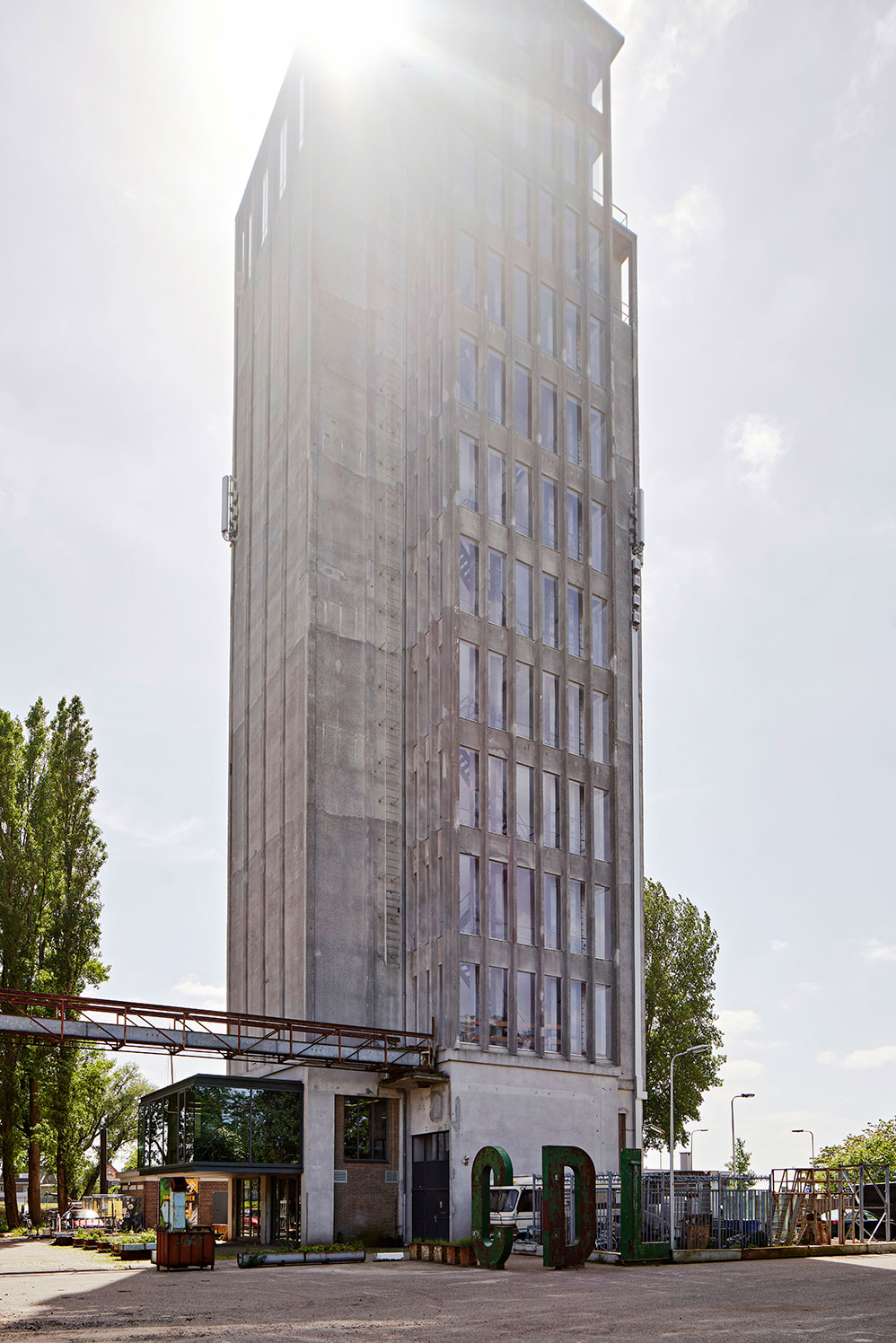
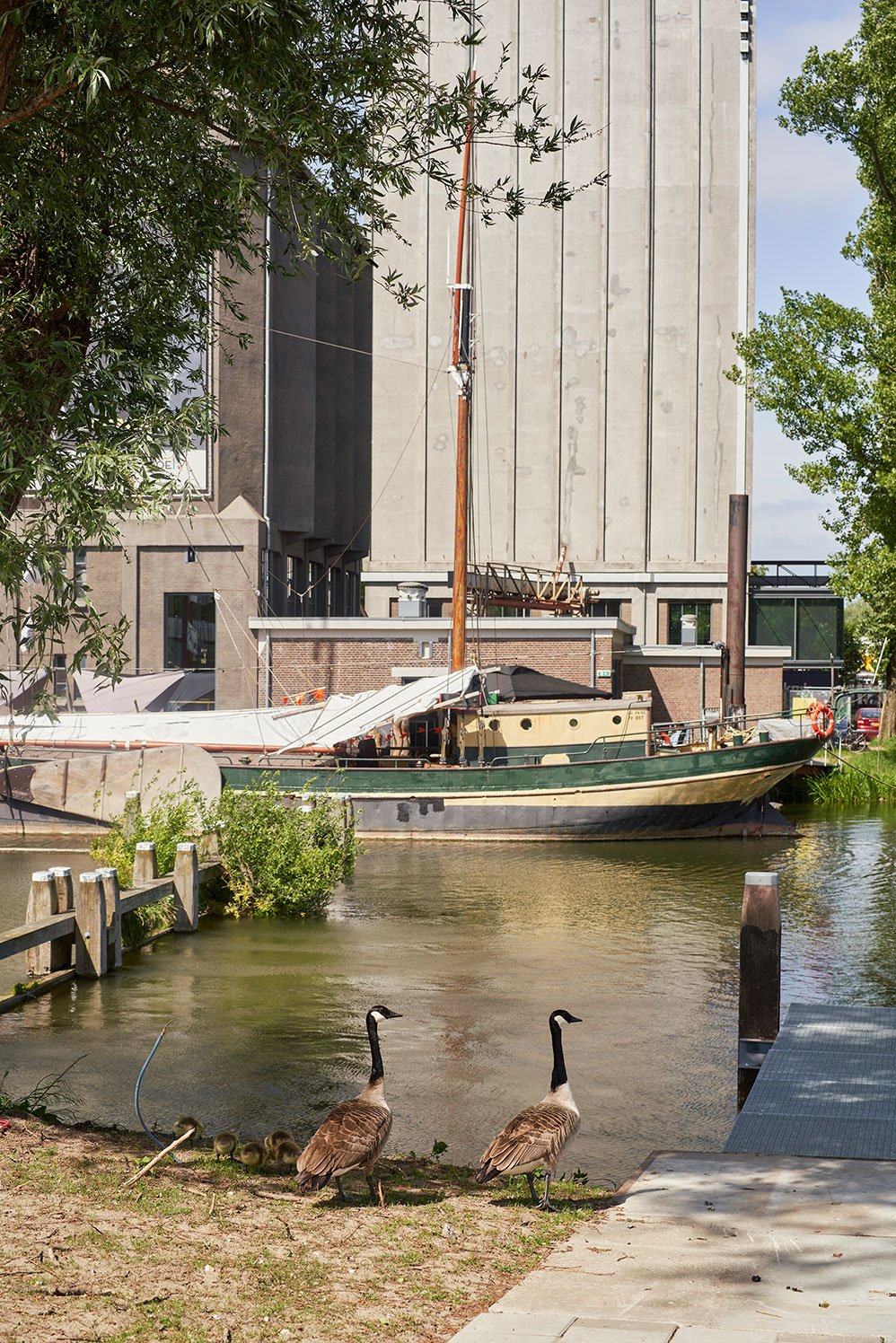
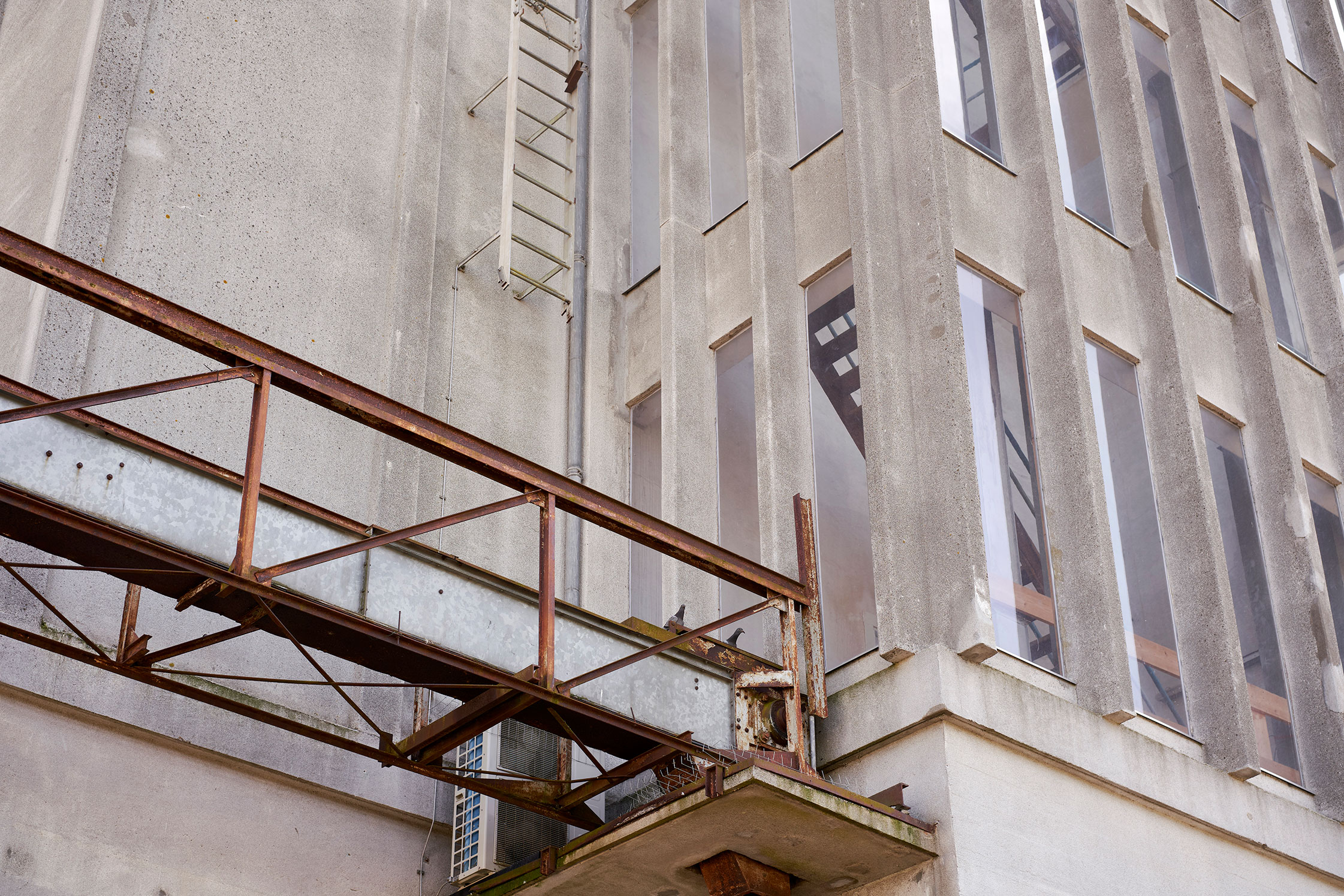
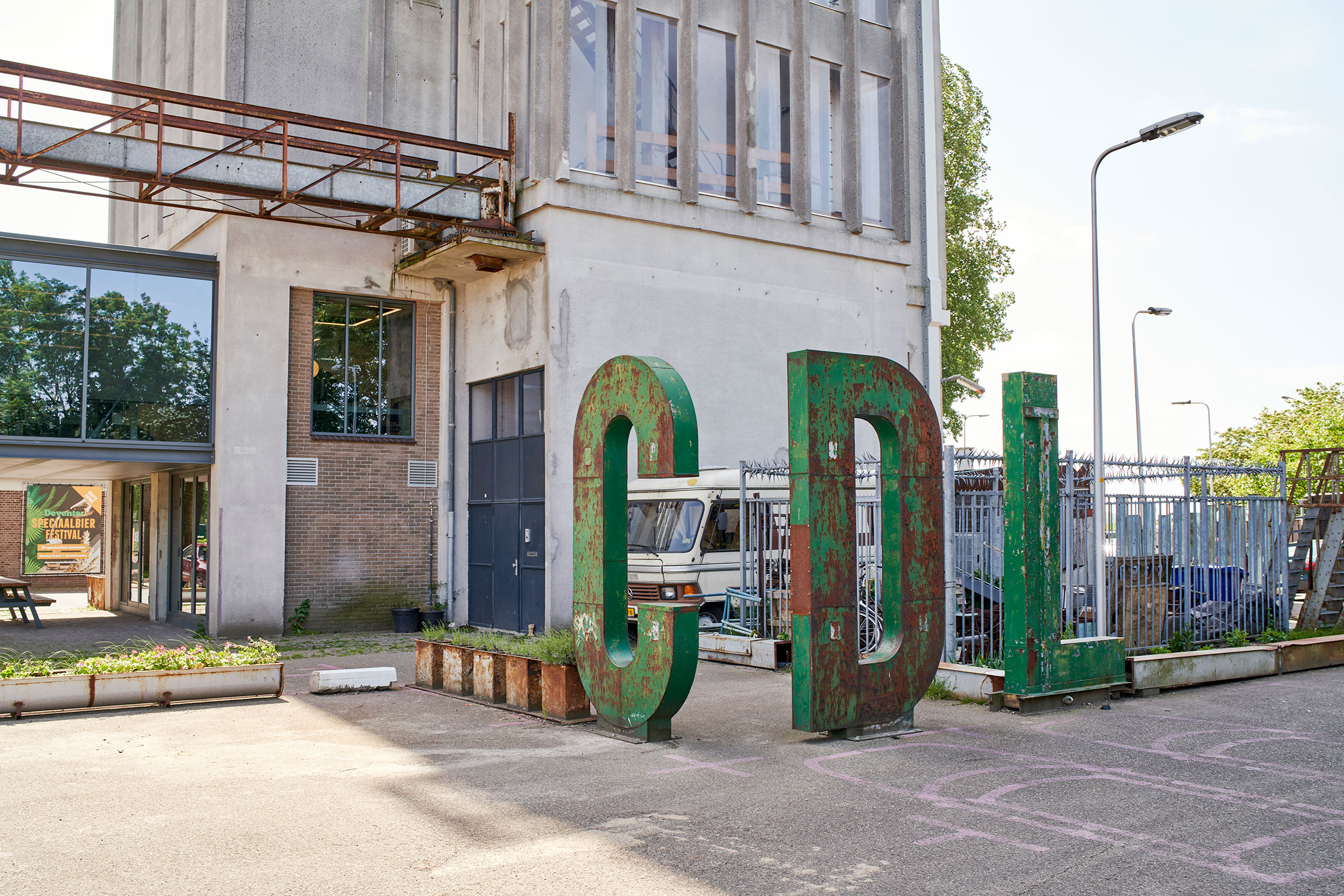
“Make a cup of coffee!” Anjo tells the spherical Homey device on the floor. “He always listens to José more than me. It’s sexism, I’m telling you,” Anjo says, jokingly.
Two individuals purchasing a giant old grain silo was a unique situation for the city’s municipality. It took Anjo and José a lot of hustle and convincing before they were taken seriously. “Before we started renovating we had a lot of talks with the municipality,” says José. “We did a lot of research, like how to deal with the concrete renovations, and I think that was our unique selling point. We could take some of the burden off of the municipality’s shoulders.”
For the design and structure of the place, the couple teamed up with I’M Architects, a Deventer based firm that had been involved with the silo for quite some time, performing feasibility studies for the municipality. “They knew the building well. And our vision for the transformation, how we wanted to preserve the building’s character as much as possible, fit perfectly with the designs they created.”
Taking up just the top floors of the silo—the floors between architecture studio Groen + Schild on the ground floor and the apartment are too difficult to renovate due to construction restrictions—the apartment is a bright, modern, and highly functional home. The large windows look out onto the surrounding countryside. On a bright day, you can see as far as Zwolle, a city 30 kilometers north of Deventer. It’s an open floor plan, the ceilings are high and the walls bare, but thanks to the distinct character of the different living and dining room corners, it never feels overwhelming.
Elements of the old silo, as well as José and Anjo’s own ingenuity, transform the space into a personal safe haven. In the living room area, a wooden cupboard suddenly springs to life, revealing Anjo’s coveted television. “I didn’t want a television,” chuckles José, “but Anjo finds it so relaxing. He built this cupboard himself.” Above the kitchen island, a set of wine racks tied together with cable ties function as lamp shades for the light bulbs dangling from the ceiling. On the wall opposite the kitchen, a set of old black garage lockers serve as plant stands for different kinds of kitchen herbs. Grabbing a cup of coffee in this kitchen requires absolutely no human effort. “Make a cup of coffee!” Anjo tells the spherical Homey device on the floor, which, after a few requests, finally obliges. “He always listens to José more than me. It’s sexism, I’m telling you,” Anjo says jokingly.
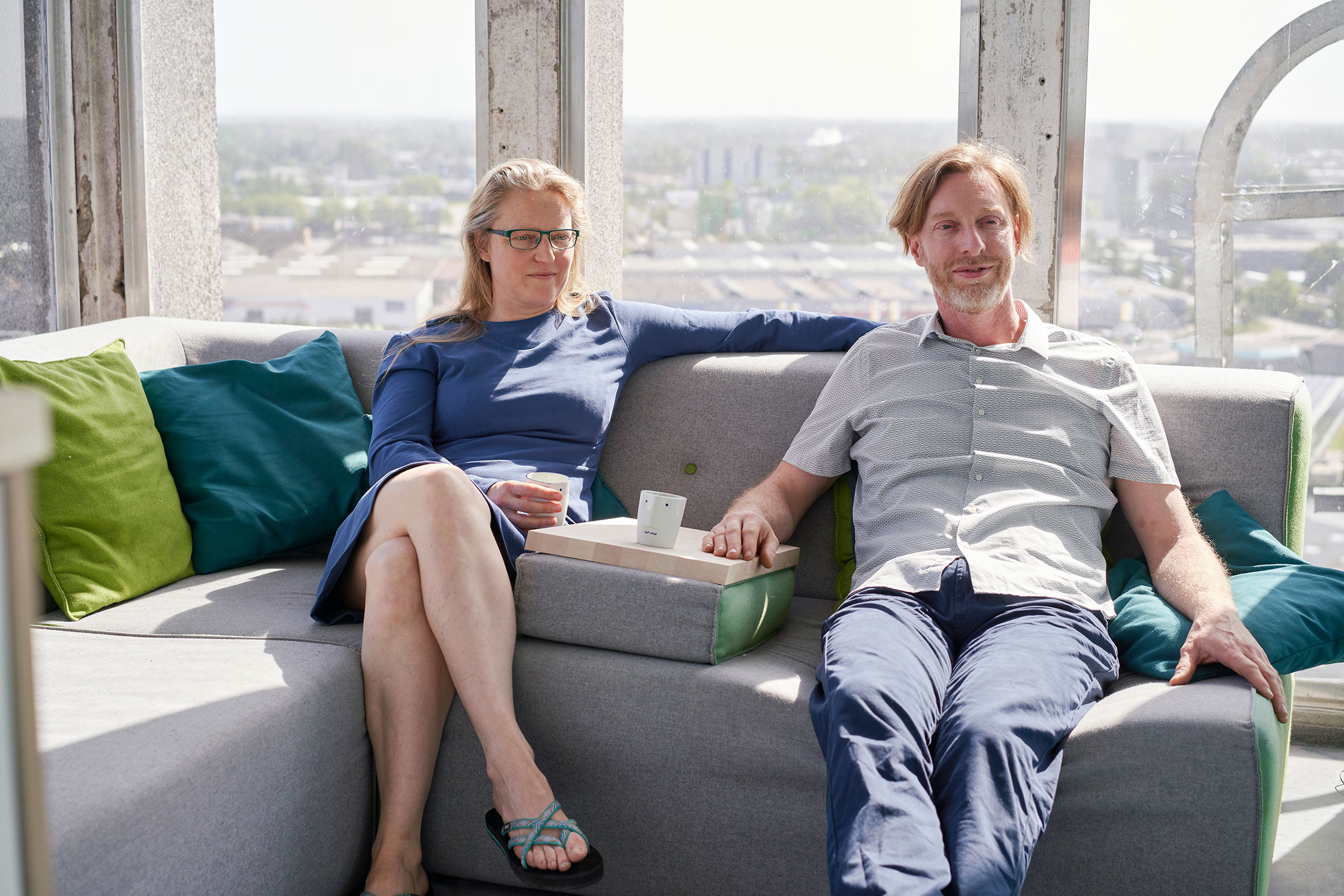
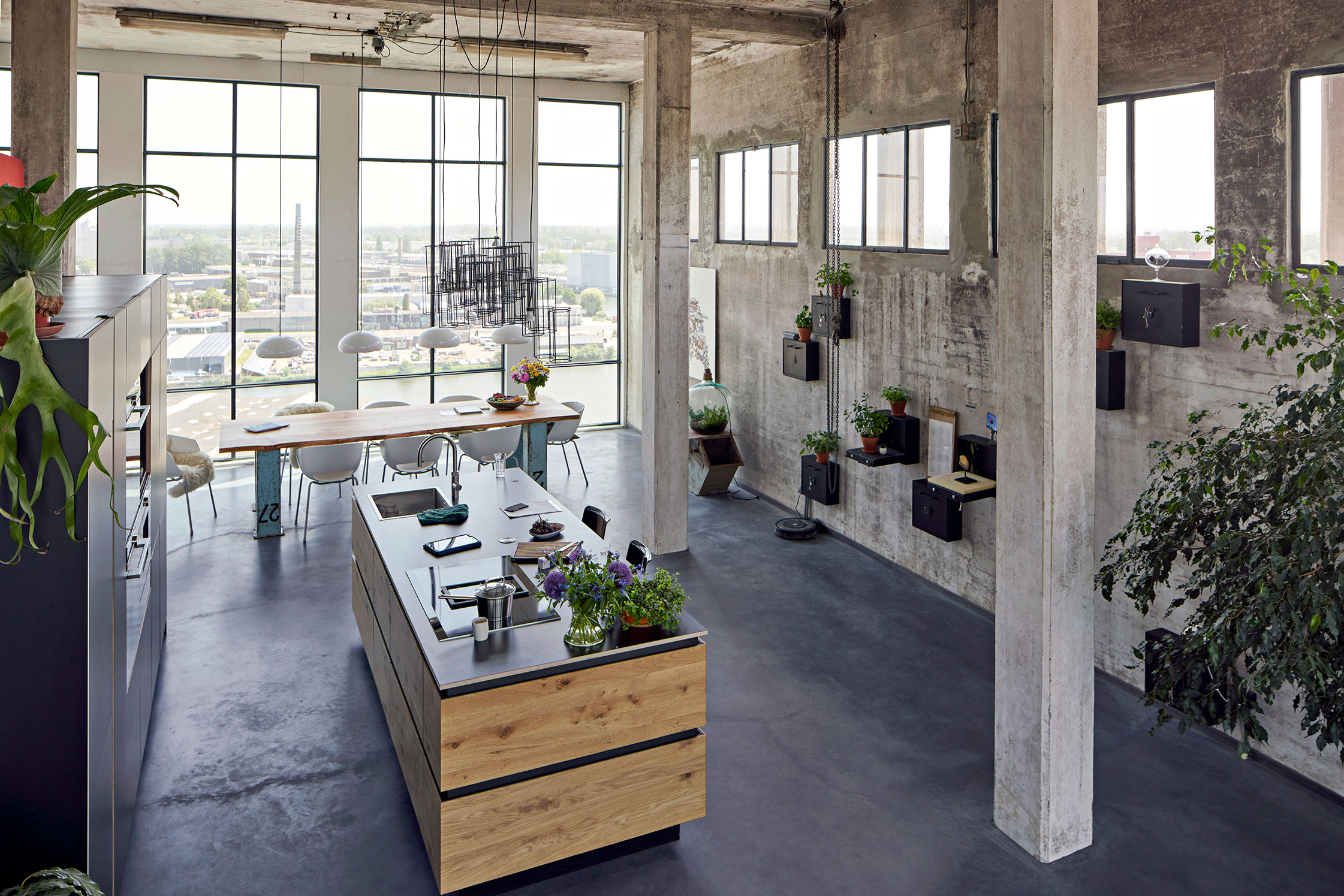
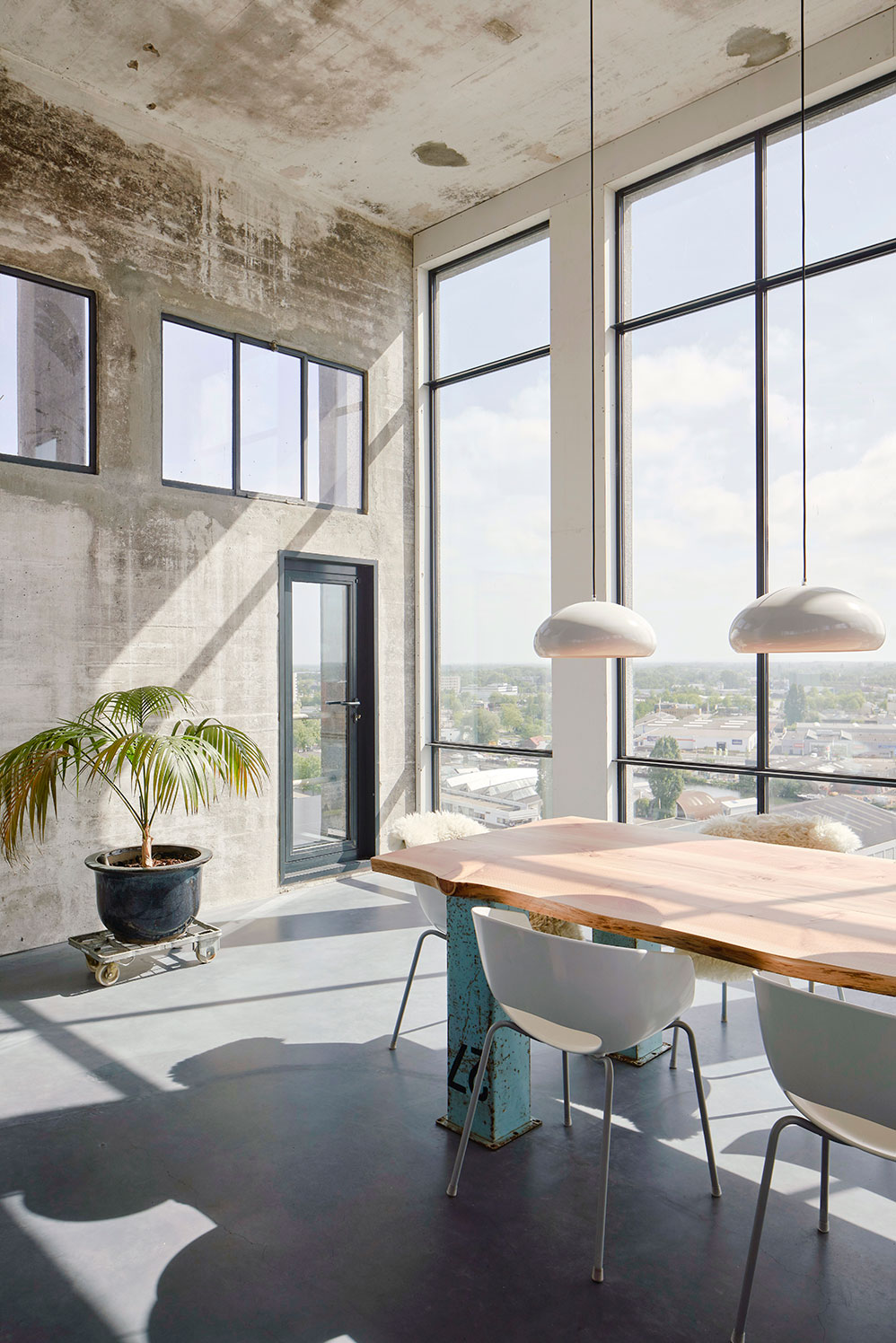
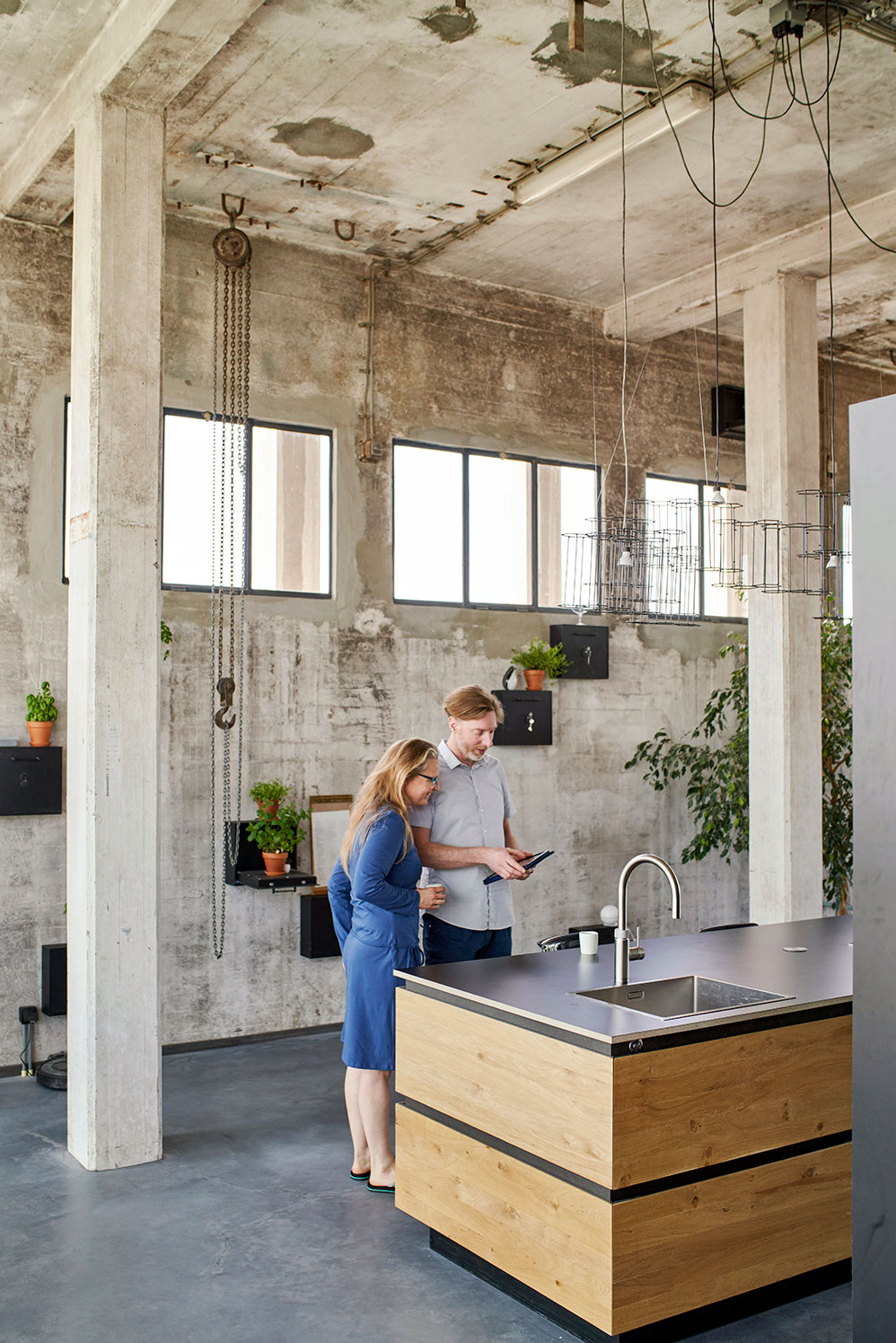
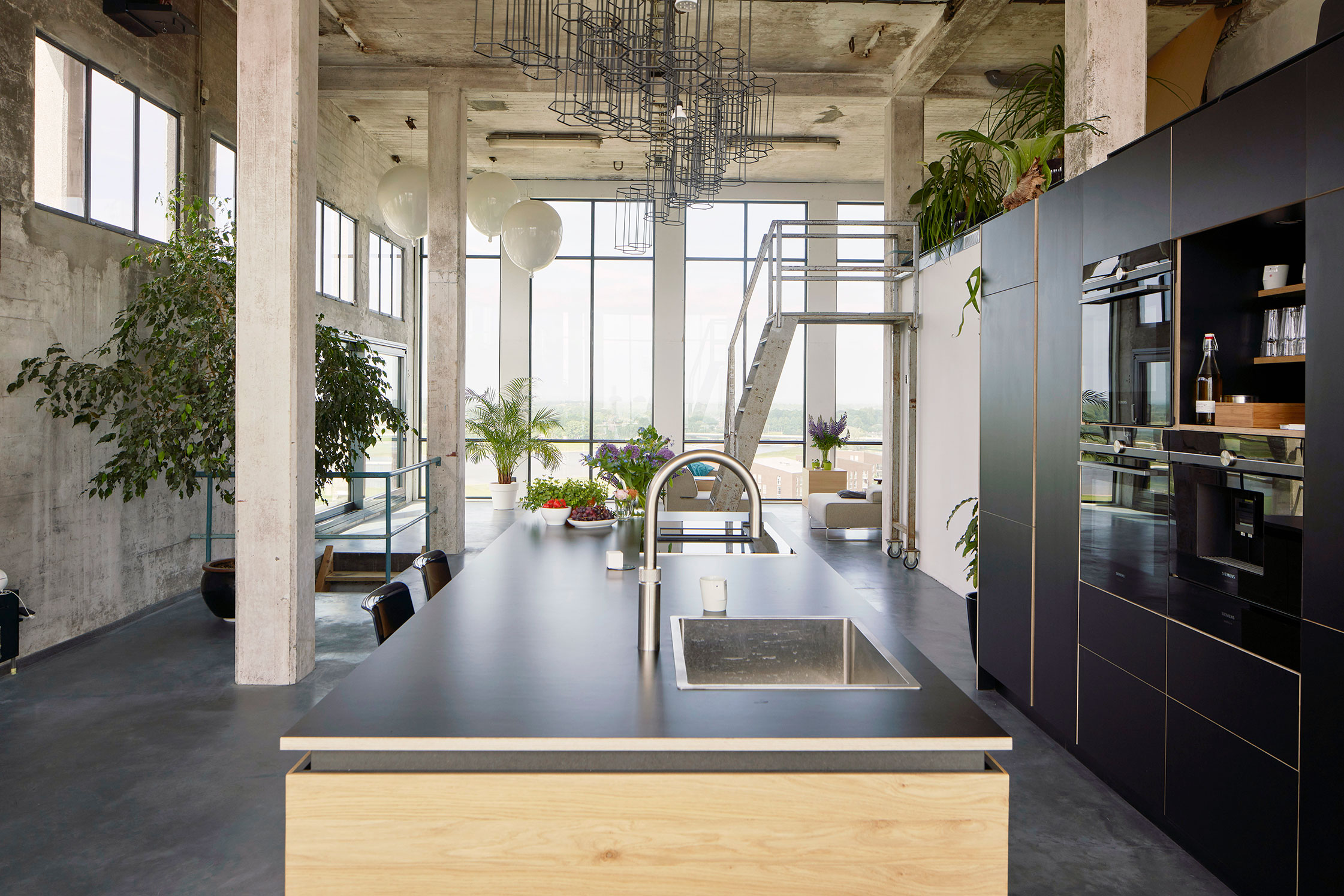
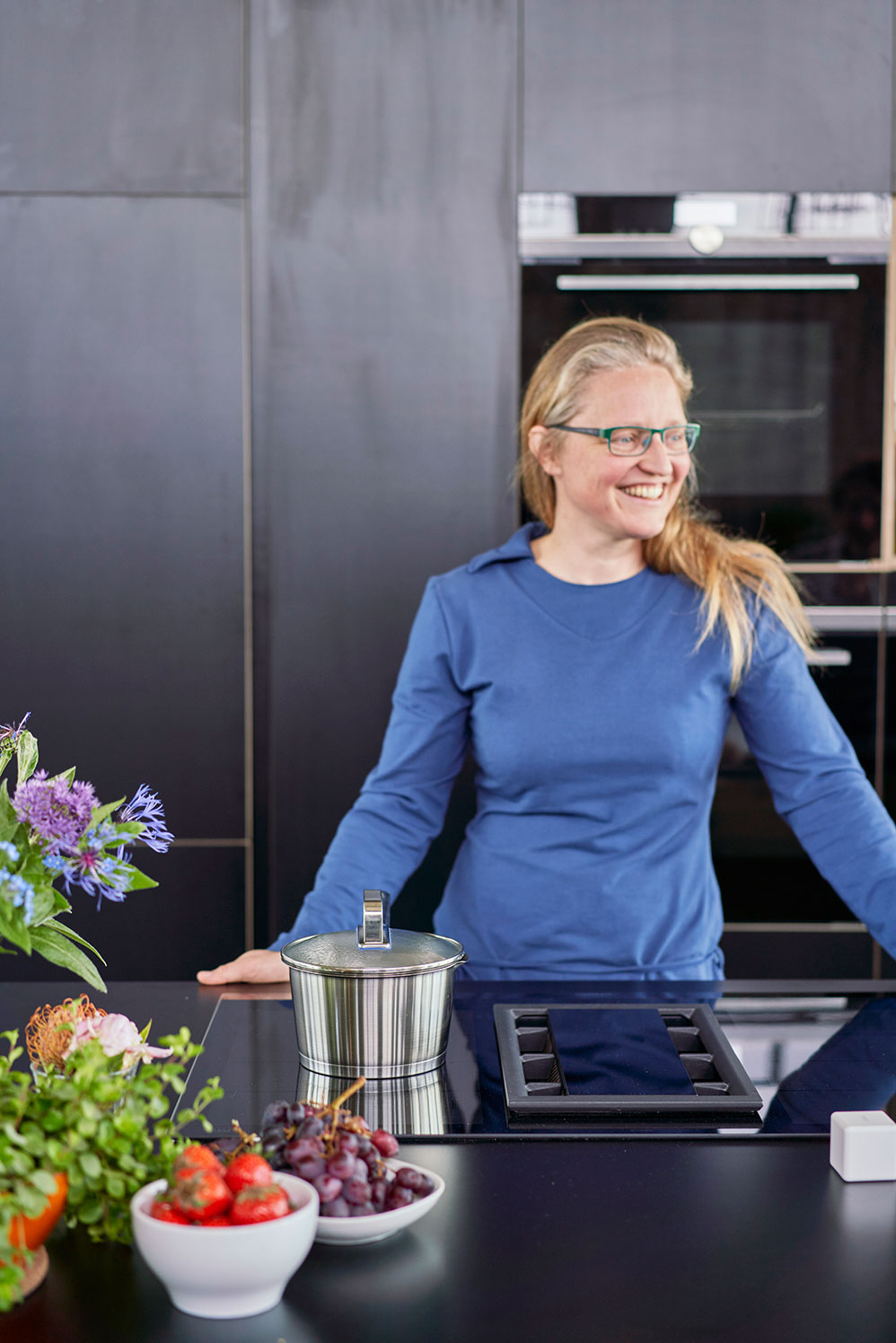
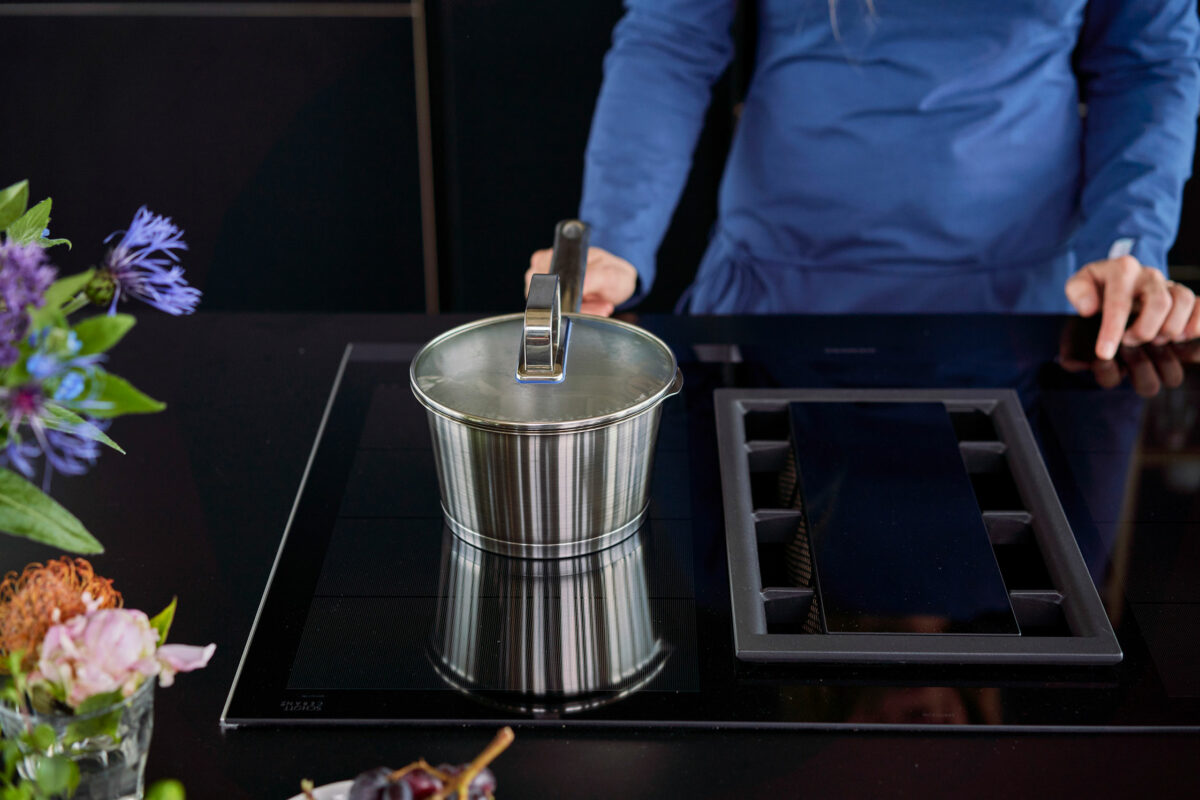
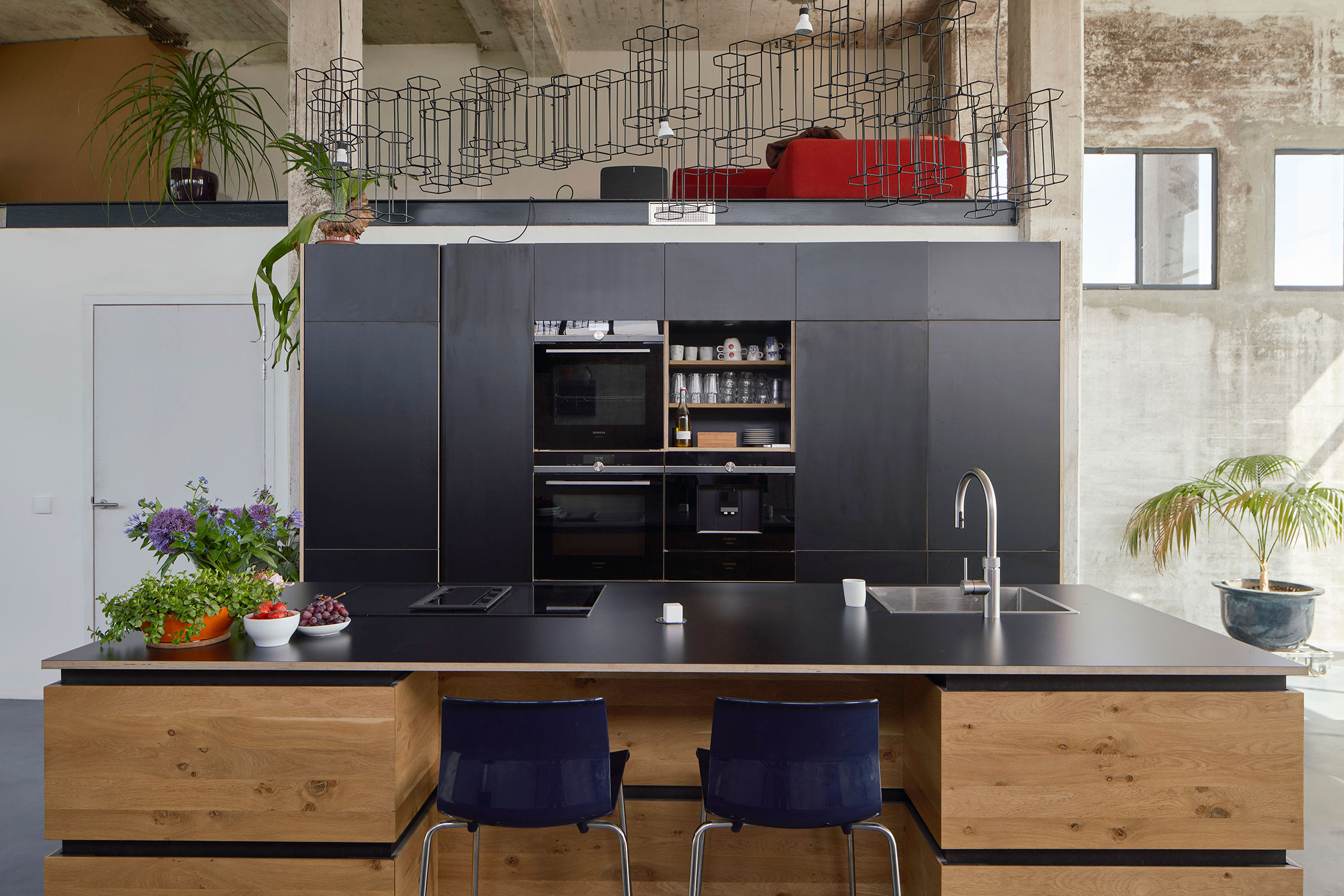
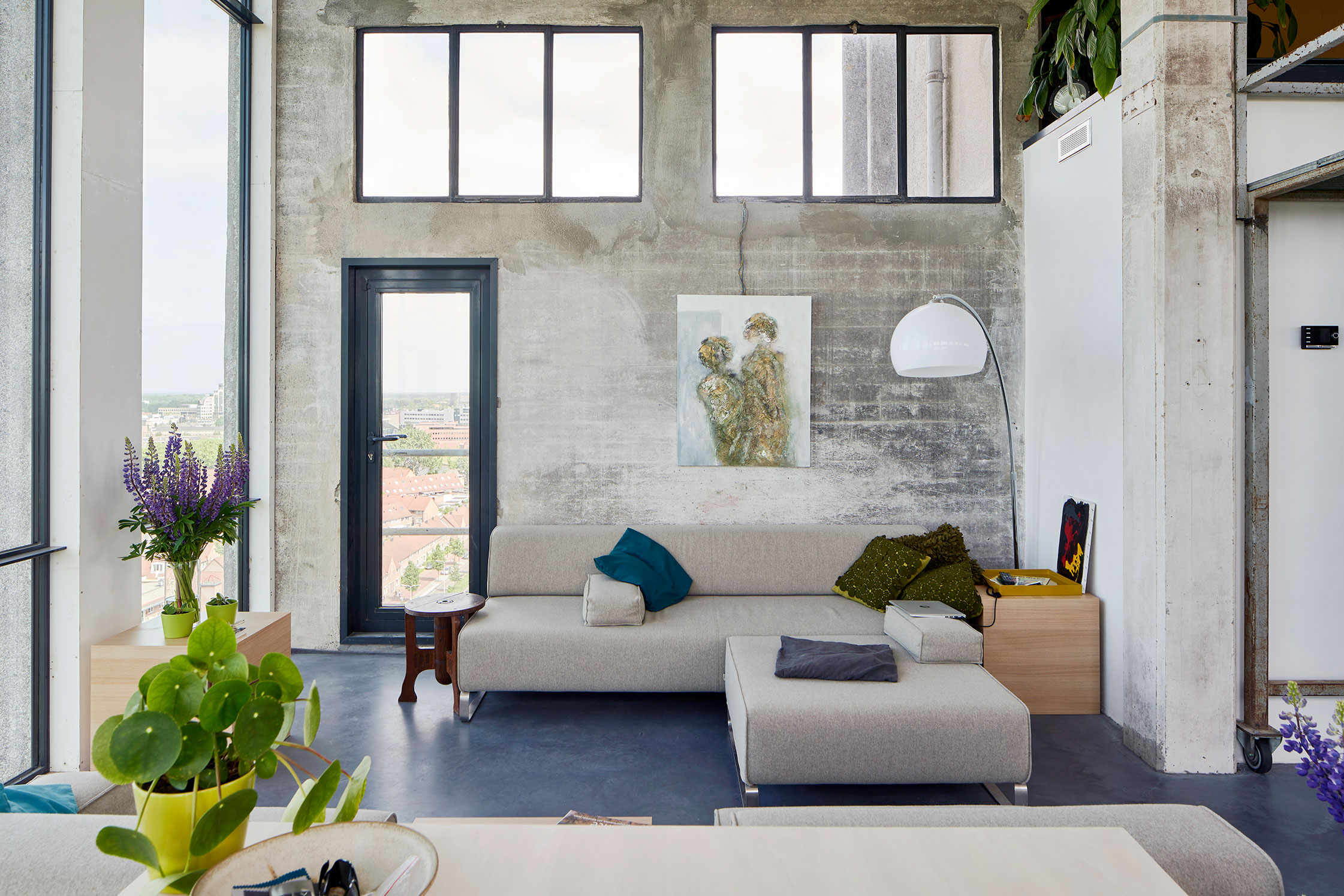
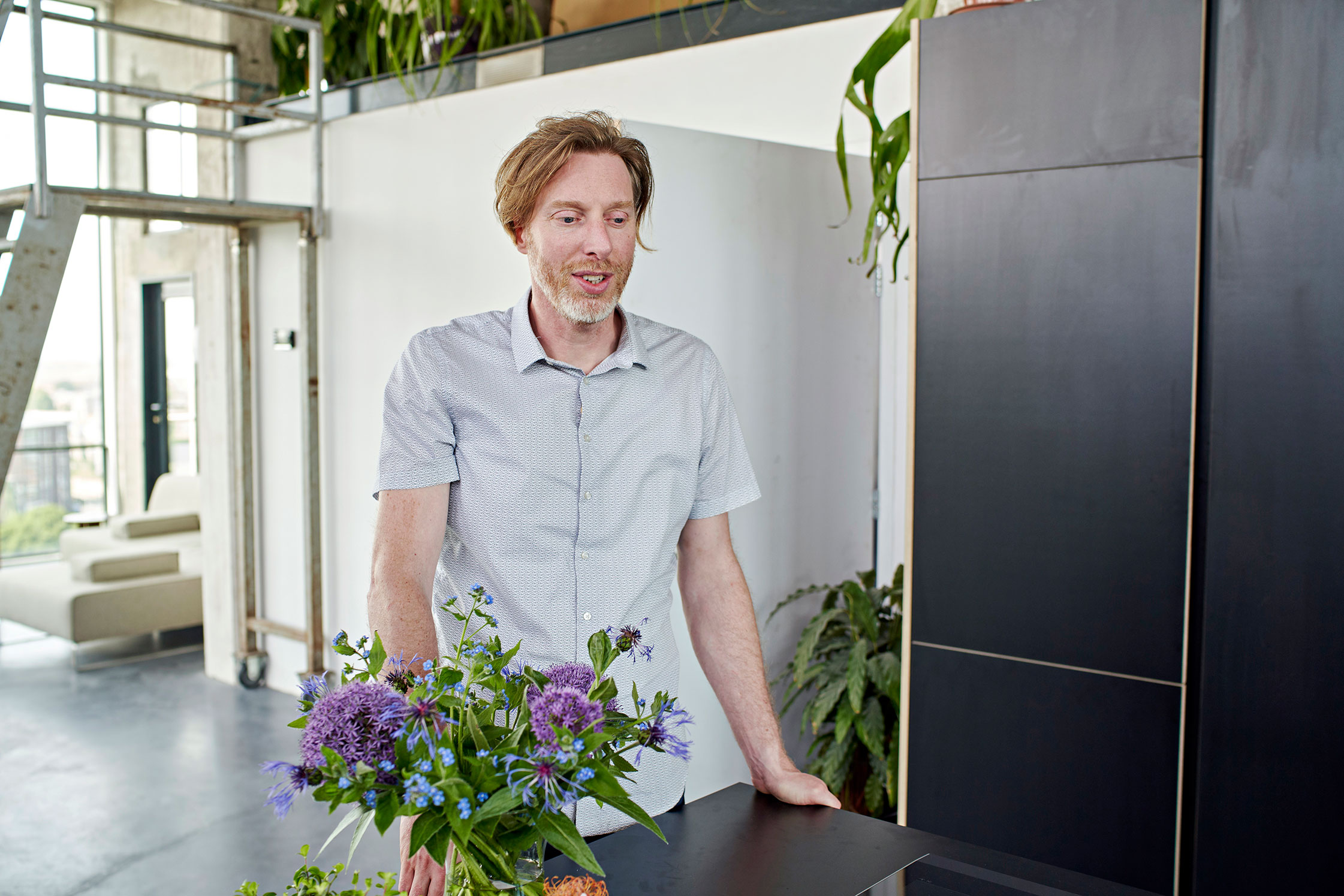
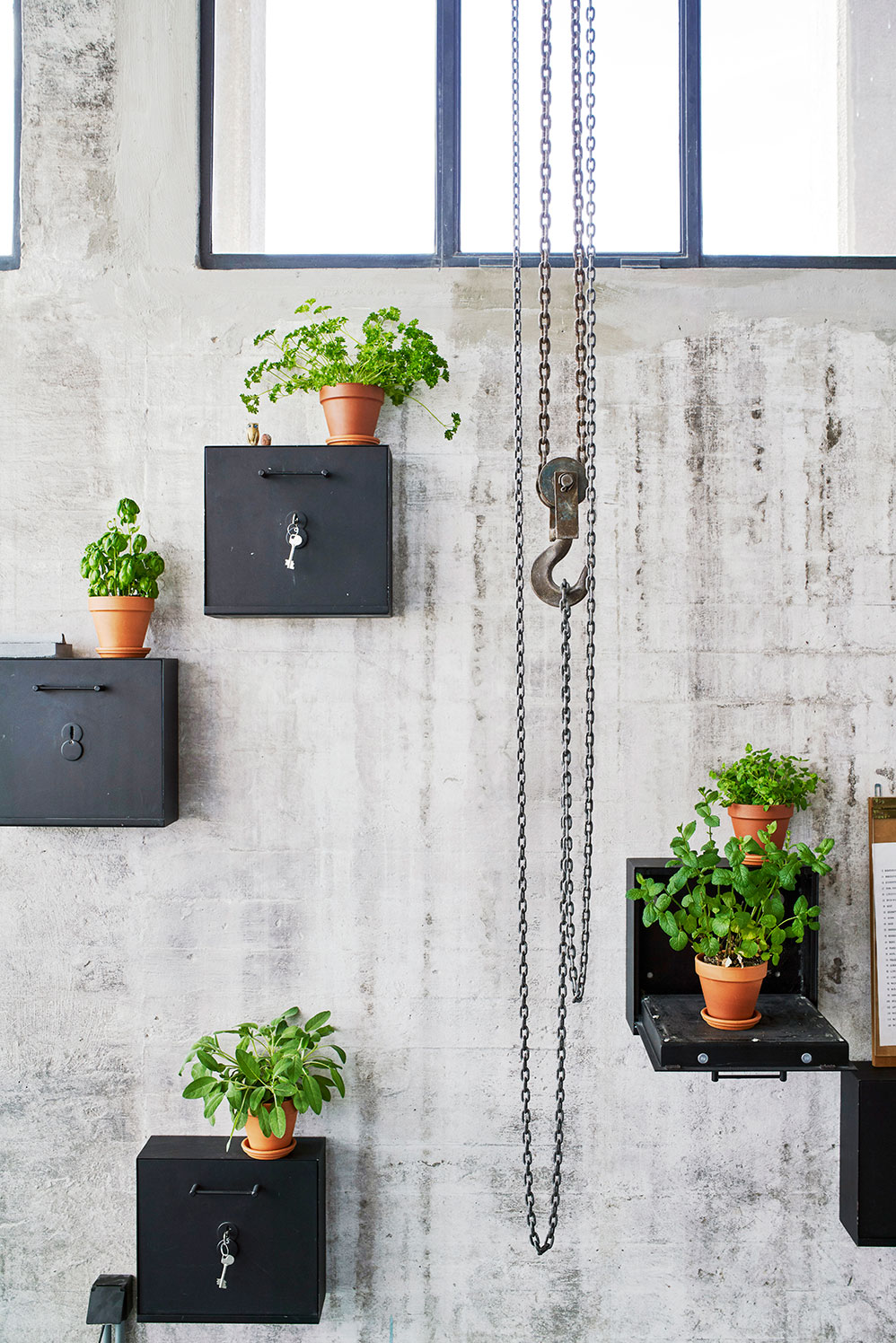
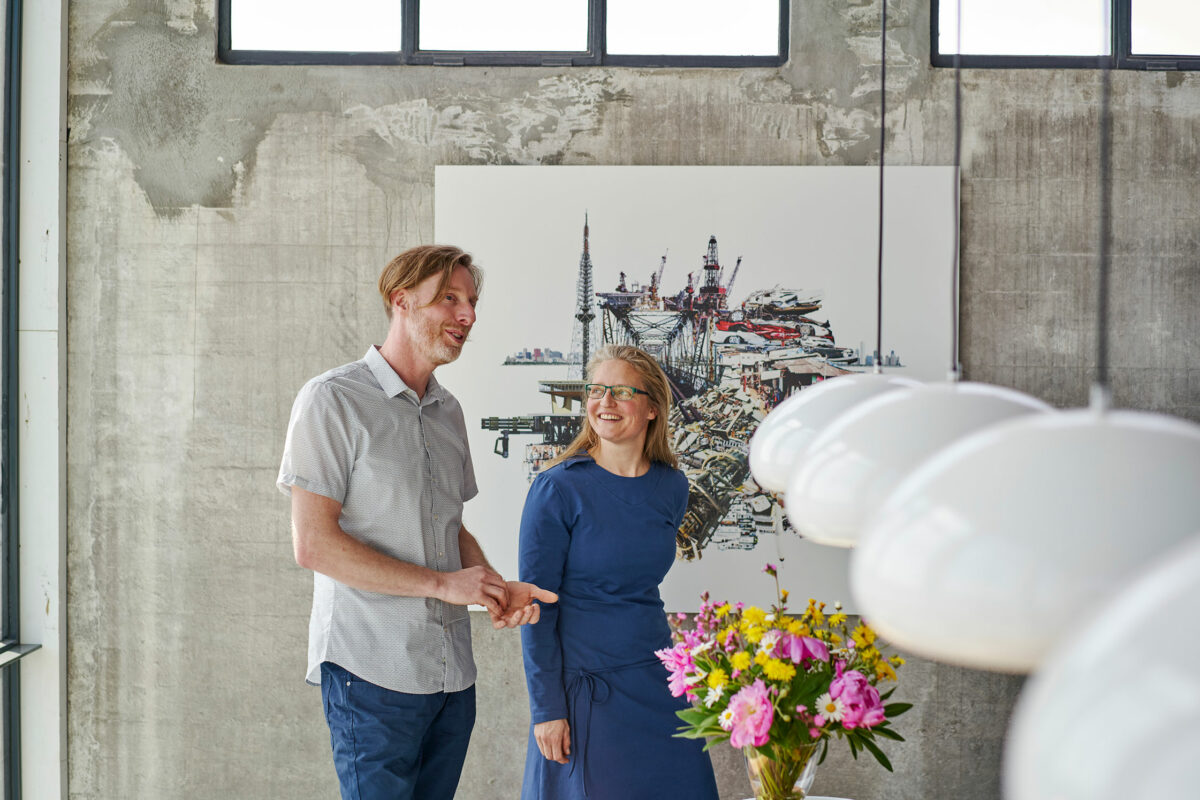
Many innovative technological solutions like this one can be found around the home, from self-cleaning windows (a must at this height) to solar connectors for warm water and lights that can be turned off even when you’re already downstairs on solid ground. “It was important to us to make sustainable choices, and make the building future-proof. And in a building like this, it’s important that everything is as simple and practical as possible,” José explains. “I’m grateful for all these technological solutions,” Anjo adds, “like when I don’t have to check if all the windows and doors are closed. And in the mornings, when the coffee machine makes a delicious cup of coffee, looking out of the window to the rising sun. Those are the best moments.”
For an even more spectacular view, Anjo and José created a garden room on the top floor, surrounded by windows on all sides but one. Big doors open out onto a roof terrace, where José plans to grow her own herbs and perhaps even vegetables. “I’ll have to experiment with which plants are suitable—they’re very exposed to the elements all the way up here—but so far the Mediterranean plants seem to do quite well.”
“We mapped out the cultural and industrial value of buildings in the surrounding industrial area. Most of them aren’t on the protected list, but it’s good to document them preemptively…”
Looking down towards the surrounding area, you quickly notice many more industrial sites and buildings scattered around the silo. Some, like the black silo next door which was turned into a food hall, and the old grain hopper turned one-room hotel called LucyCube, have already passed the test to be preserved. “I volunteer for the Foundation for Industrial Heritage Deventer, and am involved with a project where we mapped out the cultural and industrial value of buildings in the surrounding industrial area. Most of them aren’t on the protected list, but it’s good to document them preemptively and hope it will inspire the owners once they start thinking about what to do next,” José explains.
The immediate surroundings of the silo, known as the Harbour Quarter, have been assigned as a mixed-use development zone, and many people like Anjo and José have taken it upon themselves to preserve the identity of the place whilst bringing it into the twenty-first century. “One corner of the quarter is being developed into plots of land where you can build your own home,” says Anjo. “The people who buy those plots are the enthusiastic kind, all people trying to realize a dream, which gives the neighborhood an inspiring dynamic. We have a group chat where people can share their projects, excess materials, or ask to borrow something. It really connects the residents.”
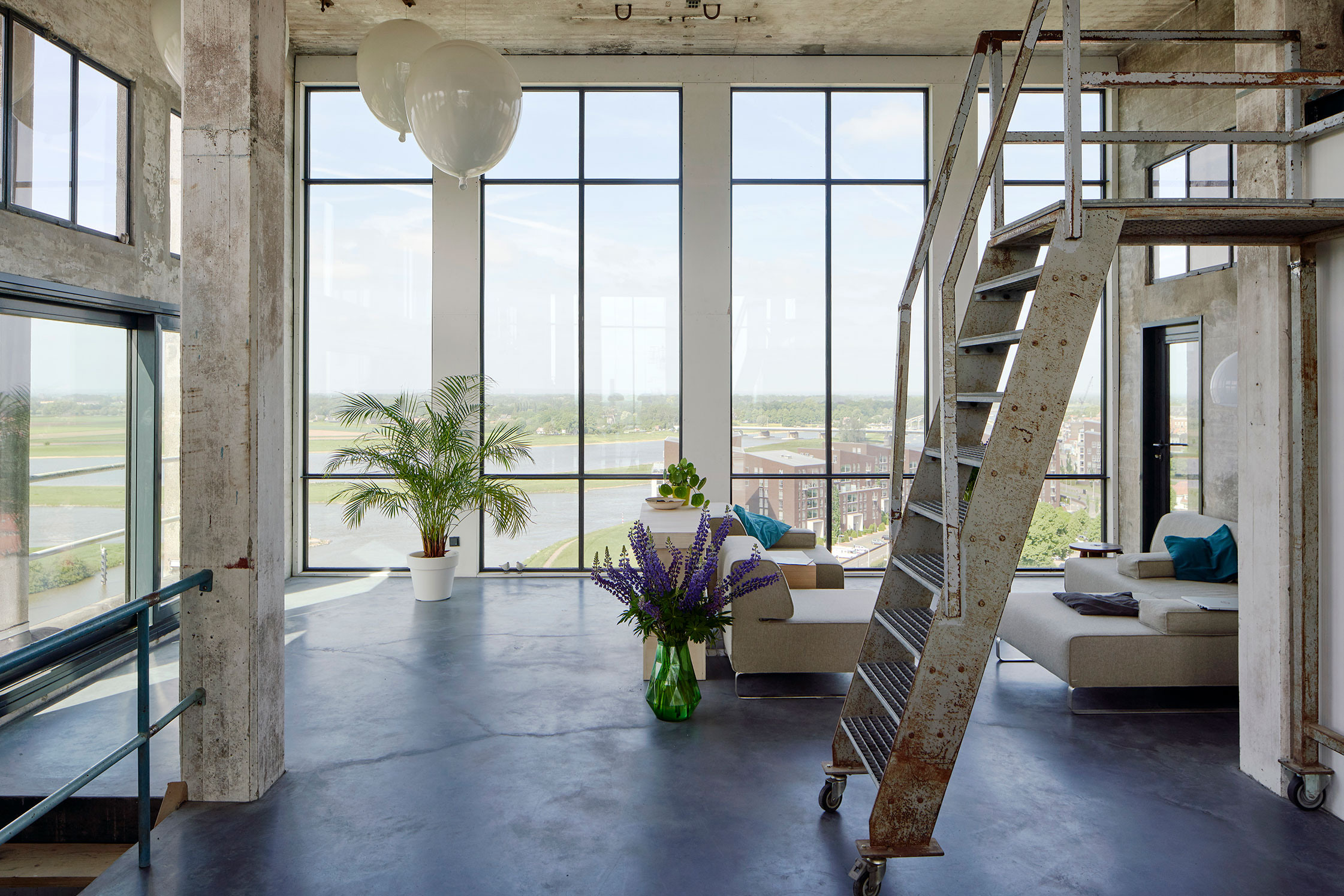
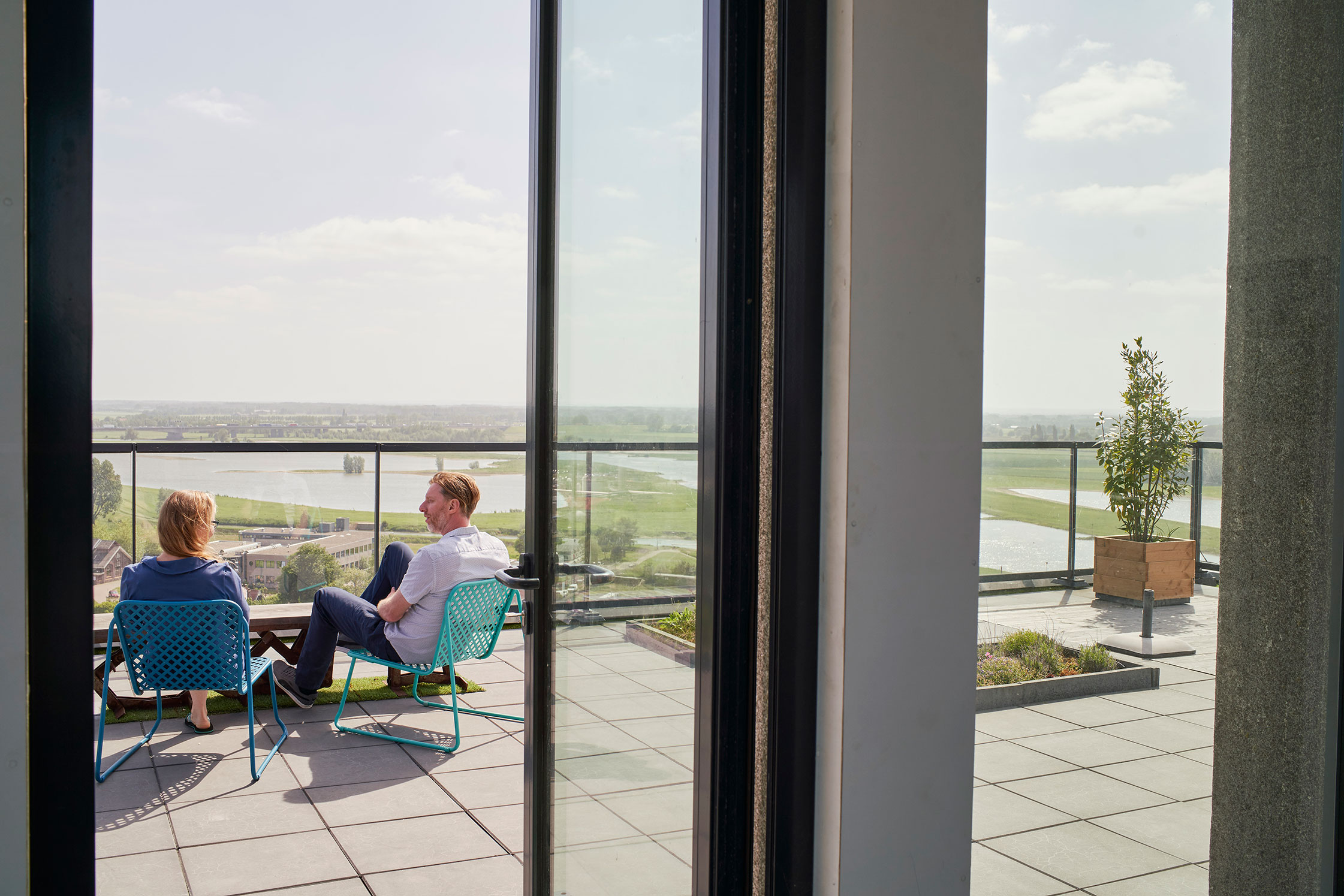
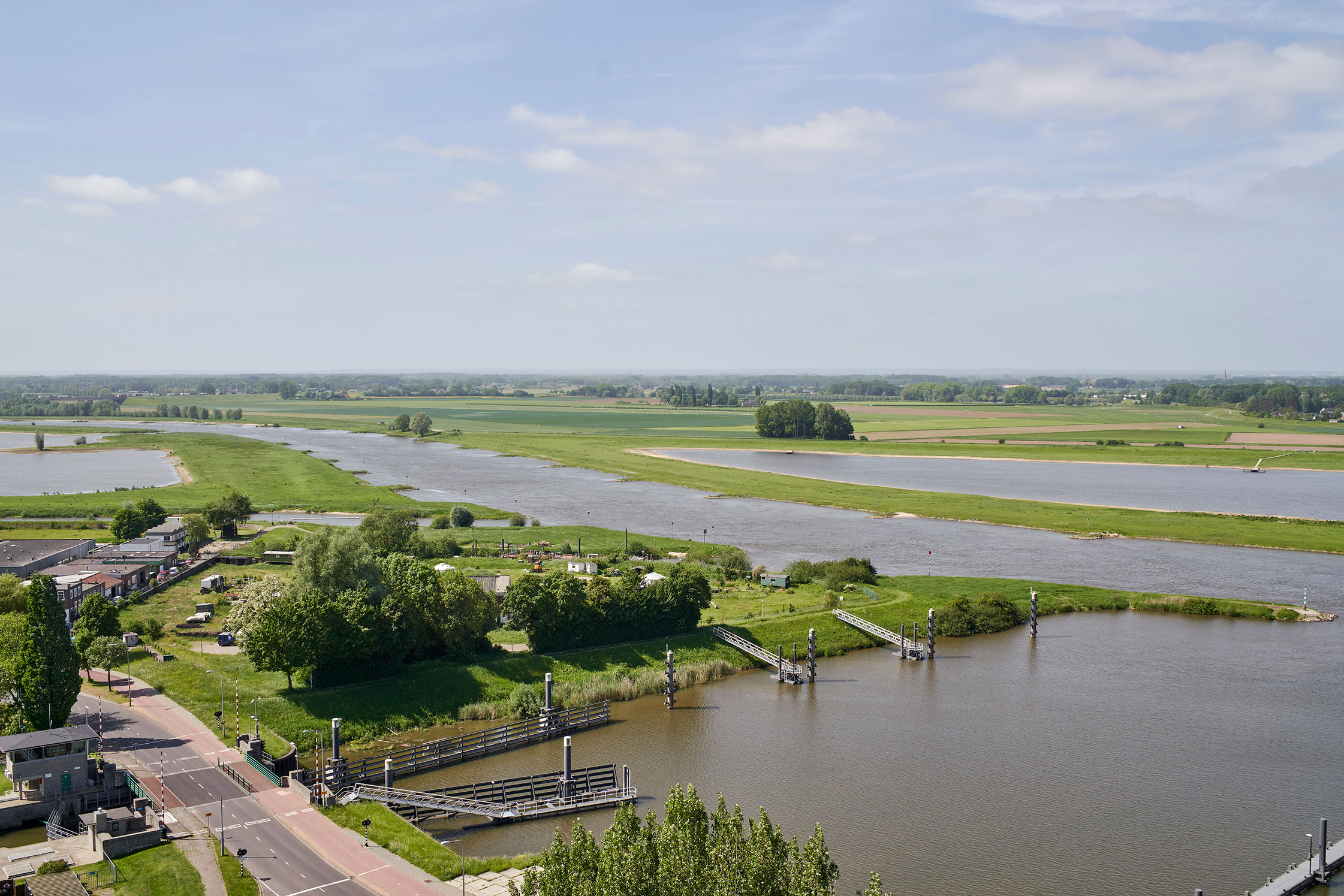
Anjo and José are intent on preserving their own historic landmark building. Their vast concrete silo is a testament to the their steely determination to save what exists before building anew. Find more from their architects over at I’m Architects. For more stories of creatives in the Netherlands, see our interviews in Amsterdam and The Hague.
This portrait is part of Home Stories – a collaboration Freunde von Freunden produces with Siemens Home Appliances. Home Stories explores the topic of innovative urban living, seen through the lenses of select inhabitants in modern global cities. We present unusual spaces, highlighting their aesthetic and technological qualities, alongside a look into their inhabitants’ lives. And be sure to take a look at our other portraits in collaboration with Siemens Home here.
Writer: Suzanna Knight for FvF Productions
Photographer: Jordi Huisman for FvF Productions
